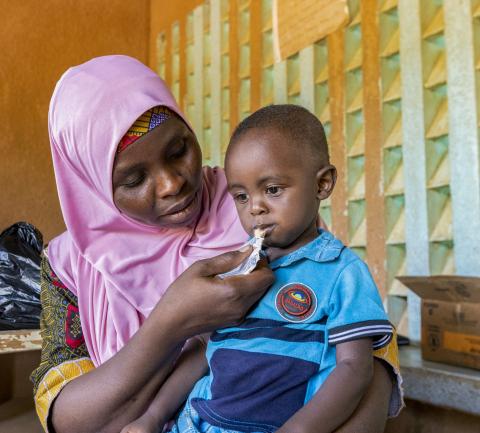Niger: An integrated preventive and curative health package for nutritional status
This is a summary of the following paper: Pedrero-Tomé R, Marrodán D, López-Ejeda N et al (2023) Impact of integrated preventive and curative health package on nutritional status of children under 2 years of age in the health area of Tama, Tahoua region Niger. Frontiers in Nutrition, 10. https://doi.org/10.3389/fnut.2023.1259706
Médecins Sans Frontières (MSF) has been working in Niger since 2001, with increased efforts since 2005. Responding to alarming food insecurity, elevated fertility and infant mortality rates, and various medical challenges – including measles and meningitis epidemics, as well as wasting – has shifted MSF's focus from treatment to an integrated preventive and curative healthcare package. This is known as the PPCSI (an acronym for “Paquet Préventif et Curative de Soins Intégrés”). The package intends to prevent and treat malnutrition, malaria, and other common diseases, and includes support to vaccination and breastfeeding. The primary aim was decreased mortality in children aged under 5 years that, if proven effective, could be replicated in more areas of the country.
This study analysed the effect of the PPCSI, which included a small quantity of lipid-based nutrient supplement (SQ-LNS) as a food complement, on the nutritional status of children aged 6–24 months in Tahoua, Niger. The study included anthropometric follow-up data from 6,962 children aged under 2 years, who received complete vaccination, malaria chemoprevention, and nutritional supplementation for those aged over 6 months. The Composite Index of Anthropometric Failure (CIAF) and growth indicators were assessed at the beginning and end of the programme for all children who completed a minimum of 3 visits, with an average programme duration of 14.5 ± 6.6 months. A comparative analysis was conducted with a sample from a neighbouring region’s vertical vaccination programme, in which children did not receive any nutritional supplementation.
Results showed a shift in z-scores for height-for-age, weight-for-height, and weight-for-age toward values indicating malnutrition at the end of the intervention. In contrast, mid-upper arm circumference increased by an average of 0.5cm. The CIAF analysis revealed a 20% increase in anthropometric failure, primarily observed in categories including stunting. Compliance with the entire programme impacted anthropometric indicators differently. Wasting improved significantly while stunting and underweight worsened. The same pattern was seen according to length of stay in the programme. When comparing Tahoua with the neighbouring region’s sample, the children in Tahoua had significantly less worsening in all 3 indicators: height-for- age (−0.70 vs. -2.44 p < 0.001), weight-for-height (-0.13 vs. -0.70 p < 0.001), and weight-for-age (−0.38 vs. -1.78 p < 0.001).
Study limitations included measurement errors by inexperienced health staff, the absence of a formal control group and reliance on data from a different MSF study for impact assessment, warranting cautious interpretation of results. That said, the authors conclude that the integrated PPCSI programme ‘is slightly effective in curbing the accumulated burden of malnutrition in the early years of life in complex contexts’.


